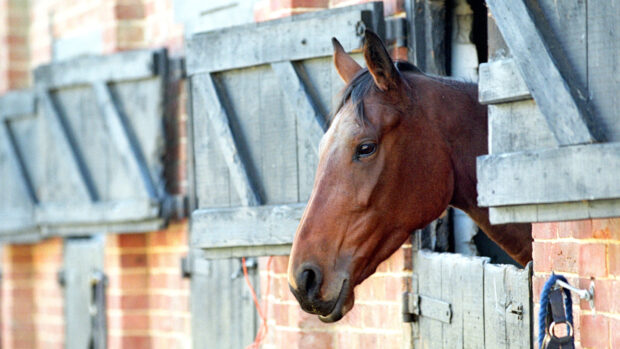Find out more about stable vices
Crib-biting and wind-sucking are unpleasant and disturbing habits developed by some horses.
They take hold of a firm horizontal surface with their teeth, arch their neck and gulp a mouthful of air.
Some affected horses repeat this stereotypic behaviour again and again, almost continuously; others display the habit intermittently.
At worst, these behaviours can lead to colic and poor health because of the excessive intake of air.
At the very least they affect dental conformation and spoil the stable or the stable door.
The habit is almost impossible to break.
Researchers in the USA studied the stereotypic behaviour of 16 long-term cribbers by monitoring them continuously by video camera.
They then analysed factors that might have increased or decreased the frequency of the crib-biting.
All the horses were stabled, with an hour of turnout per day, fed ad lib hay and short feeds twice daily.
The scientists found that once the habit was established, there was no correlation with age– in other words, horses did not get worse as they got older.
Across the whole group, cribbing was most frequent at night, which seems to contradict the commonly held notion that the habit may be linked to attention-seeking.
The amount of time spent cribbing varied from 10% to over 40% of the time.
As horses were about to begin a bout of cribbing, they all showed a typical behaviour, in which they licked the surface they were about to grasp with their teeth.
The experiment showed that horses cribbed less when fed oats than when fed sweet grain. An exercise period of more than 20 minutes reduced cribbing for the rest of the day.
When stable toys were introduced, the horses played with them for less than 5% of the time, but one toy – a spinning food dispenser – did slightly reduce the frequency of cribbing.
To conclude there appear to be three things that reduce crib-biting in established cribbers: increased exercise, reduced sweetness in the diet and some stable toys.
Of all these factors, changes in diet were likely to have the most beneficial effect.
This veterinary article was first published in the current issue of H&H (8 December 2011)
Do you want to find out more about stable vices?



